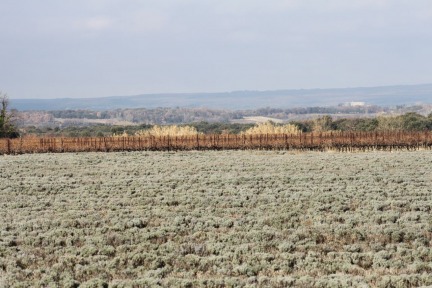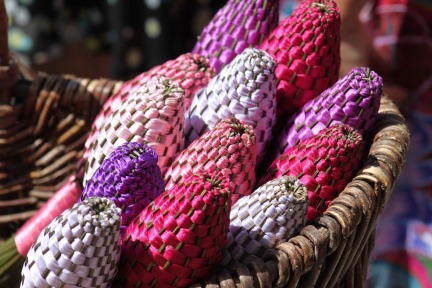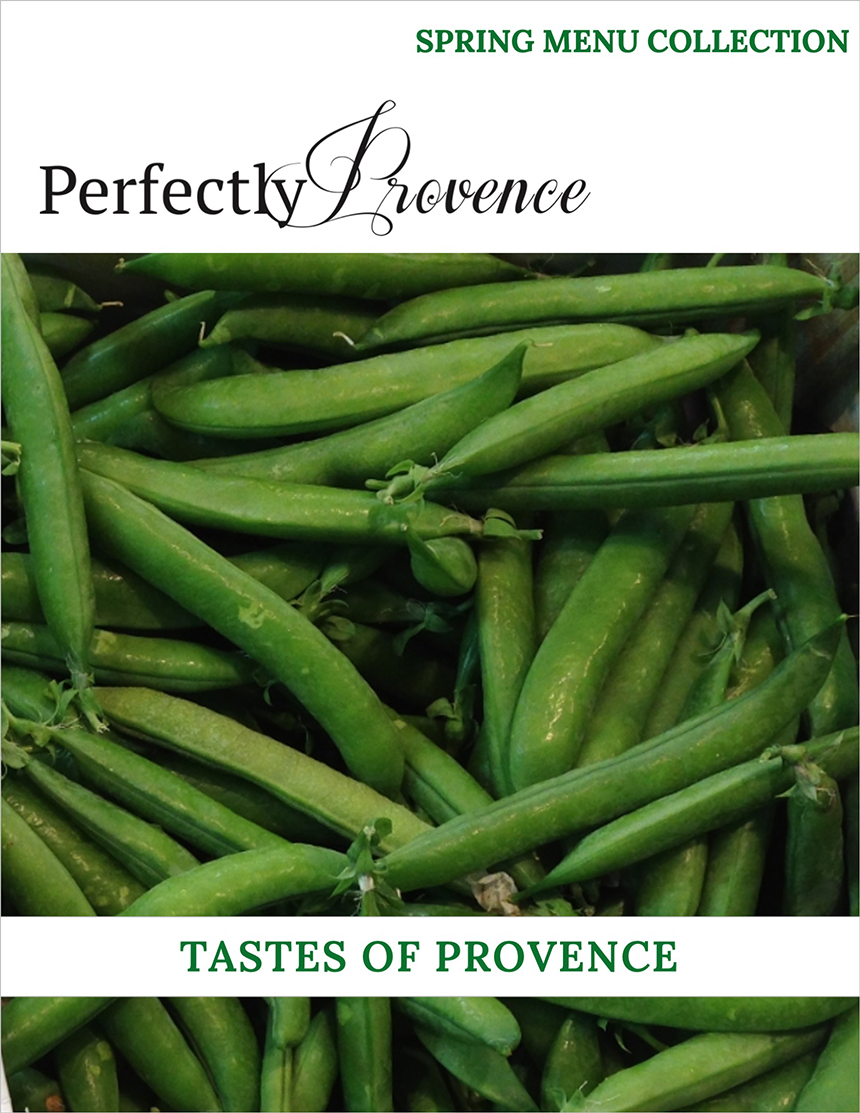One of the things on Nutmeg’s “Top-10” list for their trip to France was to behold the lavender in bloom. Arriving in October after the lavender season, with only the winter months ahead, it would be a long wait. The happy news is that even in January, the fields are beautiful (see below). The wait was well worth it, in the last few weeks of June when the weather is Provencal “perfect” the countryside comes alive, awash in shades of purple. The fields flower at slightly different times depending on the plant variety, the altitude, specific geographic area and of course mother nature herself. In other words, one “field” trip will not suffice. With their cameras prepared, Ginger and Nutmeg were fortunate on several occasions to witness the fields in full colour and take some of their own pictures.
Click here to see the whole gallery.

So what happens to all that lavender?
Much of the lavender is distilled to create essential oil and fragrant water. The plants are also dried and used to create scented objects for personal use. Stores in Provence are overrun with all things lavender; soap, perfume, honey, tea, ice cream and scented packages. A majority of the product sold in stores is mass-produced outside of France and hardly artisanal. However, there are a dedicated few who are still focused on quality and are attempting to keep the traditions alive. Several cultivators are growing their lavender plants in a totally organic fashion, despite the burdensome paperwork requirements imposed on “Bio” operations.
One of the charming traditions being kept alive by a few souls is the art of making the lavender fuseaux.
What is a fuseau?
A fuseau is shaped like a baby’s rattle, although some might describe it as a wand or spindle. These beautifully scented objects are 100% natural, as just the fresh plants are used, no artificial additives. The purpose of the fuseau has always been to scent clothes or linens. The fuseaux can only be made by hand and are adorned with bright coloured ribbons. Provencal dowry chests in the 18-century often contained fuseaux, which were used to separate and perfume, the clothes and linens. Lavender is the gift of choice for marriages that last 46 years, a symbol of love and happiness.

Nutmeg was able to talk with one of the few artisans (Elsa) who are still making the fuseaux in Provence. The production season is short, lasting from roughly mid-June to the end of August. The plant must be harvested that day, in order to have the right consistency, the stalks must bend not break. Elsa uses exclusively lavandin for her fuseaux, as it grows at altitudes below 800 meters, and it offers a high content of essential oils. The larger fuseaux are made with 100 stalks. The cuttings are tied tightly with a satin ribbon and then the stems are carefully folded over the flowers. A coloured ribbon is weaved through the stalks. This is a time consuming effort. Elsa estimates that she produces 60 per week for the season. You can learn more about her handy work on her website Fuseaux de Lavande.
The fuseaux are timeless, and they will last forever. For five years, all you need to do is squeeze the “head” gently to refresh the fragrances. Then on an annual basis, just a few drops of lavender scented essential oil, to rejuvenate the fuseau. A natural deterrent for bugs, a symbol of love, produced by hand and a beautiful tradition. Make a commitment; never purchase another mass-produced lavender sachet, as they are the killers for this dying art form.
Food Travel Tags:
Artisans, Lavendar Fuseaux, Lavender, Provence, Traditions, Travel Tips











